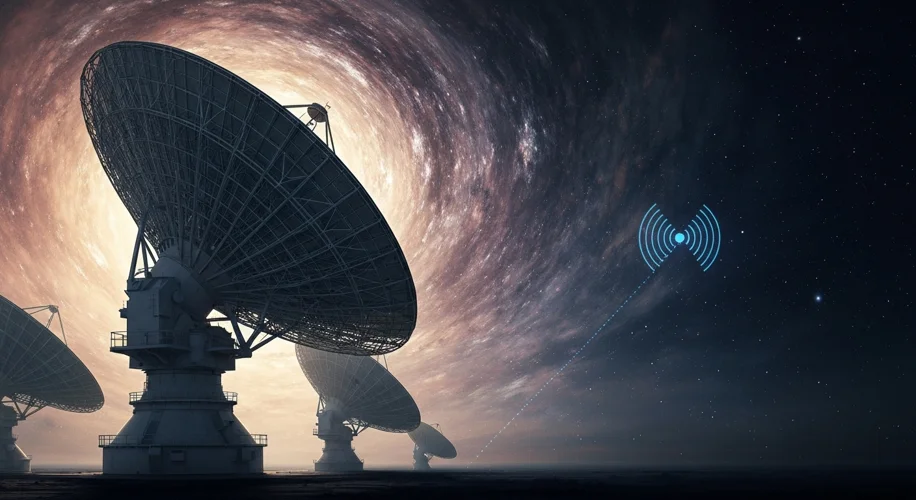The hum of activity in NASA’s Deep Space Network (DSN) control rooms is usually a symphony of controlled urgency. For decades, these colossal dishes scattered across the globe have served as humanity’s lifeline to the furthest reaches of our solar system, listening for whispers from the void. But on July 21, 2023, that symphony turned discordant. A single, misplaced command sent an alienating silence across the unfathomable gulf of space, cutting off contact with one of humanity’s most enduring emissaries: Voyager 2.
Launched in 1977, Voyager 2 was, and still is, a testament to human ambition and engineering prowess. It was designed to explore the gas giants of our solar system – Jupiter, Saturn, Uranus, and Neptune – and then venture into the interstellar medium. By 2023, after over 45 years of travel, it was an astonishing 12.3 billion miles away, a tiny, venerable probe carrying the dreams and curiosities of a planet that sent it on its way. Its mission, though evolved from its original planetary Grand Tour, remained critically important: to measure the conditions in interstellar space, a realm untouched by the Sun’s direct influence.
The fateful command was intended to reposition Voyager 2’s antenna. A routine procedure, or so it seemed. However, due to a human error, the command sent was incorrect, tilting the antenna just enough to misalign it with Earth by a mere 2 degrees. This minuscule shift, imperceptible from our planet, was catastrophic for a spacecraft millions of miles away. Imagine trying to talk to someone across a football field, but they’ve turned their head just slightly – your voice, no matter how clear, simply won’t reach them.
From that moment, Voyager 2 went silent. The DSN, a sophisticated network of antennas designed to capture the faintest of signals, heard nothing. For days, a tense silence descended upon mission control. The vastness of space suddenly felt even more profound and isolating. The team at NASA’s Jet Propulsion Laboratory (JPL) grappled with the chilling reality that their intrepid explorer, a vessel of unparalleled historical significance, might be lost forever.
Panic, however, was not an option. The engineers and scientists behind the Voyager program were veterans of deep-space challenges. They knew that re-establishing contact with a spacecraft that far away required patience, precision, and an intimate understanding of the probe’s capabilities. The challenge was immense: how do you send a command to a spacecraft you can no longer communicate with, to correct a problem that may or may not have been successfully executed?
Their strategy was ingenious, born from necessity and deep knowledge. They decided to attempt to send a command to reset Voyager 2’s antenna. This wasn’t a simple “turn it back” instruction. It required broadcasting a specific command sequence, hoping that the probe, even with its antenna slightly askew, would eventually orient itself correctly to receive the signal. The process would take an agonizingly long time. The signal, traveling at the speed of light, takes hours to reach Voyager 2, and any response would take equally long to return.
The first attempts were made with the largest antenna in the DSN, located in Canberra, Australia. The mission team broadcast the commanding signal, a digital whisper across the cosmos, and then waited. And waited. The agonizing period of waiting for a response, knowing that the slightest miscalculation could further jeopardize the mission, was a test of human endurance.

On August 4, 2023, after what must have felt like an eternity, a glimmer of hope emerged. The DSN detected a faint signal from Voyager 2. It was weak, but it was there. The probe had managed to reorient its antenna to receive the command. The reset had worked, and Voyager 2 was back online, its antenna pointing towards Earth once more.
The relief in mission control was palpable. The collective breath that had been held for weeks was finally released. This near-catastrophe underscored the fragility of our connection to the universe and the incredible resilience of the human spirit when faced with seemingly insurmountable odds. The incident also highlighted the need for robust contingency planning and the invaluable expertise of the teams who dedicate their lives to these far-flung missions.
What made this event particularly poignant was its timing. Voyager 2, alongside its twin Voyager 1, represents a unique chapter in human history – the first time we sent emissaries into the vast ocean of interstellar space. These twin probes are not just scientific instruments; they are ambassadors of Earth, carrying golden records filled with sounds and images of our planet, a message in a bottle cast into the cosmic sea. To lose contact with Voyager 2, even temporarily, was to risk losing a vital piece of our cosmic narrative.
While the incident was a stark reminder of the challenges inherent in deep-space communication, it also served as a powerful testament to human ingenuity and dedication. The successful re-establishment of contact was not a stroke of luck; it was the result of meticulous planning, deep technical knowledge, and unwavering perseverance. It was a victory for curiosity, for science, and for the enduring human drive to explore the unknown, even when faced with the profound silence of the universe. The faint signal that returned from 12.3 billion miles away was more than just data; it was a reaffirmation of our place among the stars.

